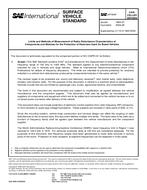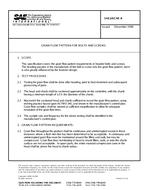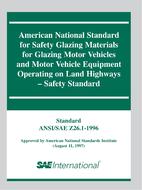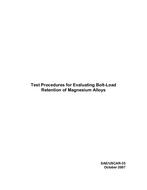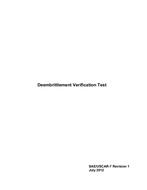Original price was: $81.00.$40.50Current price is: $40.50.
Limits and Methods of Measurement of Radio Disturbance Characteristics of Components and Modules for the Protection of Receivers Used On Board Vehicles (Cancelled: Sep 2006)
standard by SAE International, 09/01/2006
Description
This SAE Standard contains limits1 and procedures for the measurement of radio disturbances in the frequency range of 150 kHz to 1000 MHz. The standard applies to any electronic/electrical component intended for use in vehicles and large devices. Refer to International Telecommunications Union (ITU) Publications for details of frequency allocations. The limits are intended to provide protection for receivers installed in a vehicle from disturbances produced by components/modules in the same vehicle.2
The receiver types to be protected are: sound and television receivers3, land mobile radio, radio telephone, amateur and citizens’ radio. For the purpose of this document, a vehicle is a machine which is self-propelled. Vehicles include (but are not limited to) passenger cars, trucks, agricultural tractors, and snowmobiles.
The limits in this document are recommended and subject to modification as agreed between the vehicle manufacturer and the component supplier. This document shall also be applied by manufacturers and suppliers of components and equipment which are to be added and connected to the vehicle harness or to an on-board power connector after delivery of the vehicle.
This document does not include protection of electronic control systems from radio frequency (RF) emissions, or from transient or pulse type voltage fluctuations. These subjects are included in other parts of SAE J1113.
Since the mounting location, vehicle body construction and harness design can affect the coupling of radio disturbances to the on-board radio, this document defines multiple limit levels. The level class to be used (as a function of frequency band) shall be agreed upon between the vehicle manufacturer and the component supplier.
The World Administrative Radiocommunications Conference (WARC) lower frequency limit in Region 1 was reduced to 148.5 kHz in 1979. For vehicular purposes, tests at 150 kHz are considered adequate. For the purposes of this document, test frequency ranges have been generalized to cover radio services in various parts of the world. Protection of radio reception at adjacent frequencies can be expected in most cases.
It is assumed that protection of services operating on frequencies below 30 MHz will most likely be provided if the limits for services above 30 MHz are observed.
Product Details
- Published:
- 09/01/2006
- File Size:
- 1 file , 920 KB
